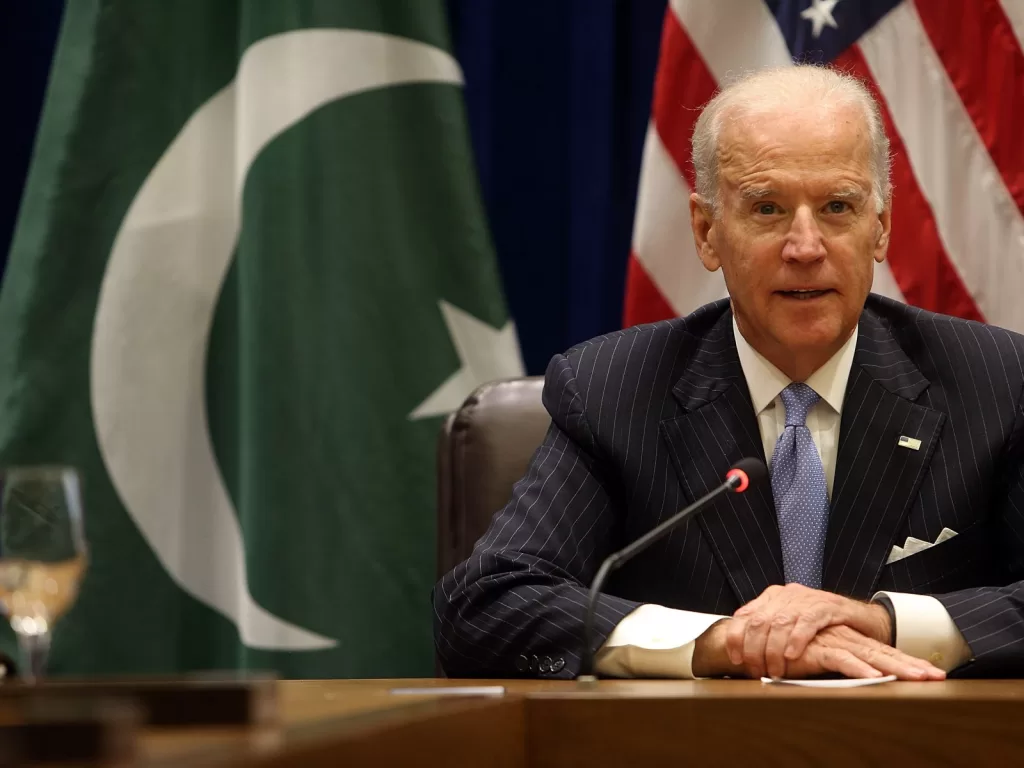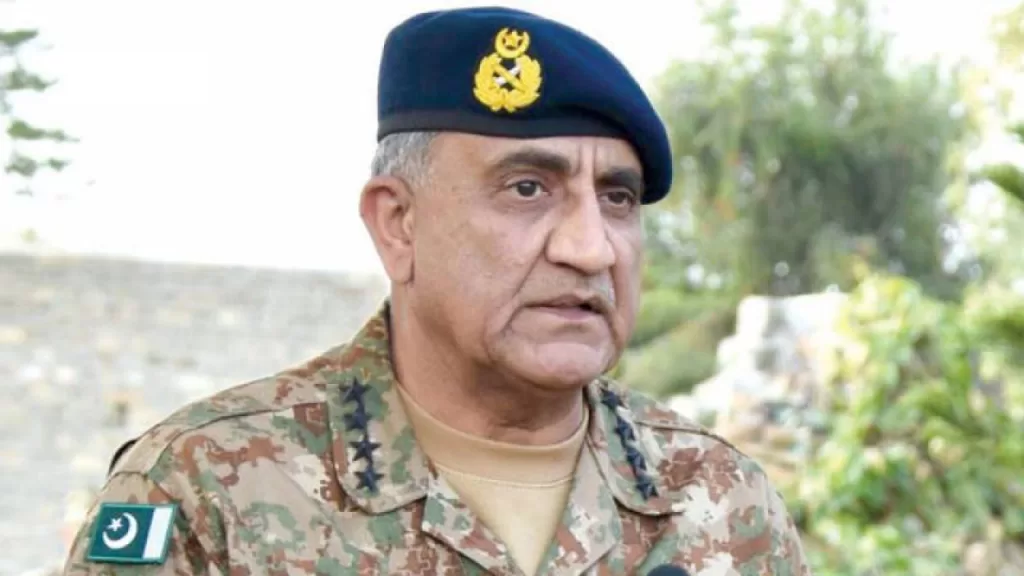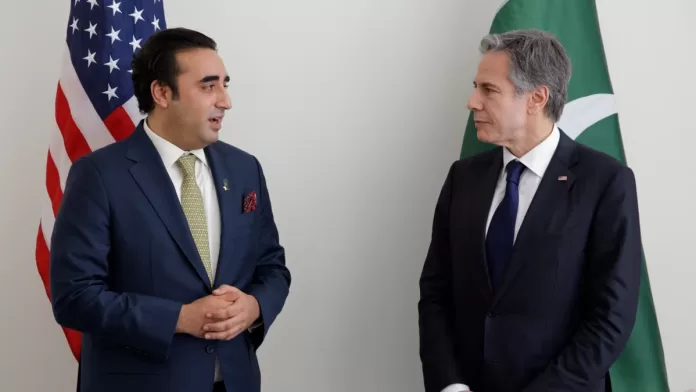The bilateral engagement between the United States and Pakistan is as old as the state of Pakistan itself. The 75 year old relationship between the two countries is yet once again at a critical junction. Since 1947, the construct of convergence between Pakistan and the US has been ambiguous. The engagement from both sides is largely compulsion driven.
Interests between the United States and Pakistan have never really converged for long and have in fact diverged frequently. The relationship has been established on an ad-hoc basis right from the beginning and continues to be transactional in nature. This roller coaster alliance is the direct outcome of the lack of a shared threat perception. Pakistan at best is, and was, a utility partner for the United States when the utility ends the relationship pauses.
The relationship has been referred to by interesting characterizations such as “Uneasy marriage to odd couple of modern international relations”, “a magnificent delusion” and “riding the roller coaster”. It has swung between being a close dance to both stepping on each other’s feet because of alienation and hostility. The US and Pakistan were in a close embrace thrice, each time initiated by Washington’s myopic need for Islamabad’s cooperation to serve critical security and strategic interests, and Pakistan’s positive response driven by economic, diplomatic, and political compulsions.
It is not that both did not benefit from the relationship but somehow it never culminated into a strategic convergence. Each interface between the two countries only added to the trust deficit between the two. The relationship always ran into bilateral and multilateral contradictions. What has made the relationship more complex is the rise of China, its open convergence with Pakistan, the rising rivalry between the US & China, and subsequently Washington’s desire to counter China by consolidating its relations with Pakistan’s arch rival India. This has actually disturbed the security matrix of South Asia. If we put a timeline to this, then perhaps the mid-2000s need to be highlighted.
The China-Pakistan relationship consolidated further because of a paradigm shift in the U.S.-India relationship. Consequently, and perhaps more importantly, in 2013, the Belt and Road Initiative (BRI) was announced by the Chinese President Xi of which the China-Pakistan Economic Corridor (CPEC) was a flagship project. It was worth $62 billion and contained a variety of initiatives including infrastructure, energy, economic zones, and the development of a strategic port, Gwadar. CPEC was almost like the Marshal Plan for Pakistan, its timing was critical, Pakistan was struggling financially and facing diplomatic isolation, US had already withdrawn its patronage.
This has remained the case since. China has bailed out Pakistan, time and again, both on the diplomatic front and the economic front. The relationship has stood the test of time in the worst of times.
A strategic triangle comprising of China, Pakistan, and US also functioned quite successfully in this region. The three major convergence eras were: (1) During the 1969-71 period, when Pakistan provided the channel for secret talks between Washington and Beijing, (2) the decade following the Soviet Union’s invasion of Afghanistan in 1979, and (3) the years following 9/11 attacks, when the world turned its focus to Afghanistan and terrorism.
The dynamics have changed since, the United States is switching its priority to countering Chinese and Russian military might after almost two decades of focusing on the fight against terrorism and Afghanistan. Pakistan in its growing urge to balance relations with the US and China, appears to have fewer options in finetuning the right balance in the emerging world order given its economic vulnerabilities and security imperatives.
There is serious skepticism in the US regarding Pakistan. It is a country that is tolerated more than accommodated. The Strategy Paper 2021 and 2022 does not even mention Pakistan as an ally. This is a huge draw down from being the most allied ally and a non-NATO ally. Interestingly, the 10-year NATO Strategic Plan 2022 addressed the threat from China for the first time.
China is now viewed in the US as a state posing “systemic challenges to Euro-Atlantic security”. NATO’s Secretary-General Jens Stoltenberg’s is on record saying that “this is not about moving NATO into the South China Sea, but it is about taking into account that China is coming closer to us.”
Since 9/11 attacks, Pakistan is largely viewed in the US with an Afghan lens. The situation got complicated when Pakistan overtly went into a strategic convergence with China and also Russia. Pakistan’s constant tilt towards China, has consequences for its relationship with the US.
Washington is also critical for Pakistan. It is its largest export market and has also been a leading investor for the past 20 years. In the fiscal year 2021-22, the direct investment in Pakistan had increased by 50%. The assistance that has come to Pakistan in times of ecological crises is commendable. The US government has provided more than $56 million in flood relief and humanitarian assistance; the support continues. Pakistan’s dependence on the US-sponsored IMF, World & Asia Banks remains a reality. The US has also consistently supported education reforms in Pakistan. Pakistan has the largest US Government funded Fullbright Program in the world, with over 800 students traveling to the US every year.
Since its inception, 9621 Pakistanis and over 941 Americans have participated in the program. There’s also a sports diplomacy program and programs for differently abled students. A functioning relationship with the US is also important in the maintenance of defence capabilities of Pakistan. In September 2022, the US State Department approved a foreign military sale worth $450 million for the maintenance of Pakistan’s F-16 program after some ill-will.
There is news about the renewal of the Communication Interoperability and Security Memorandum of Agreement (CIS-MOA) between Pakistan and the US. The renewal of the CIS-MOA suggests that the US at least does not want to downgrade security ties with Pakistan. However, this does not change the ground reality that US is a major player in the regional politico-dynamics and has a tenuous relationship with Pakistan, over Islamabad’s proclivity towards China.

The Pak-US has never been easy to understand or describe, Afghanistan has further complicated it. The outlook is largely negative. US in Pakistan is viewed as a fickle partner and Pakistan has responded by trying to court a superpower, do it’s bidding, but at the same time protect its core interests. Invasion and the subsequent withdrawal of the United States from Afghanistan has had huge consequences for US-Pakistan relations. The Biden administration’s engagement with Pakistan to date pre and post withdrawal has almost exclusively focused on Afghanistan. However, Pakistan wants the relationship to be defined more broadly, based, and rooted in geoeconomics trade investment and connectivity. The US is not receptive to Pakistan’s geo-economic pitch as much as Pakistan would want it to.
US Secretary of State Anthony Blinken when responding to questions on the Afghan war post US withdrawal from Afghanistan had to give assurances to the Congress on Pakistan. He said that “this is one of the things that we are going to be looking at in the days and weeks ahead – the role that Pakistan has played over the last 20 years but also the role we would want to see it play in the coming years and what it will take for it to do that.”
David Hale Diplomatic Fellow at the Wilson Center and Ambassador to Pakistan from 2015-2018 rightly said “Pakistani leaders have to protect their national interests. We can’t make them behave the way we want them to behave”. This is the crux of the issue and has resulted in growing distrust between the two. US does not trust Pakistan, and Pakistan over the years has become an increasingly anti-American country. This anti-Americanism is largely because of the US foreign policy towards Pakistan but also incorporates reservations over US foreign policy trends towards the Muslim World at large. Lately, Pakistan’s domestic political parties are using anti-US sentiment to prop up support. US is portrayed as both exploitative and oppressive in its relations with Pakistan; almost seen as a bind.
Pakistan’s unending dependence on the US has depleted its options to a point that getting out of the bind is impossible. Pakistan lacks what it takes to free itself from it. More importantly, the elite of Pakistan military, political, and economic are very comfortable with it. Until recently the power elite of Pakistan has successfully suppressed any revolutionary change.
The love-hate relationship with the radical ideologues is also a two edged sword that has worked well for Pakistan despite the challenges. It has allowed it to acquire maneuvering space for itself with the US. The million dollar question is, “is this sustainable?” Are the ruling elite of Pakistan for the first time in its history are on the back foot and this may also change the trajectory of Pakistan’s foreign policy. Several other countries have witnessed this paradigm shift, Iran and Turkey being two prime examples.
However, for now Pakistan is getting familiarized with the idea of “hedging”. Hedging is to be nicely located between balancing and band-wagoning and is a state’s third strategic choice. The ongoing global power shifts, the most prominent of which is the rise of China, Russia-China nexus, Russia’s rising global assertiveness, and last but not least the complete state of disarray and confusion the European Union is in, has given the middle powers the option of using the hedging strategy to the fullest. It involves policies that advocate a mixture of return-maximization and risk-contingency planning that circumvents the dominance of major powers.
In some ways an insurance seeking behaviour where countries having many constraints and compulsions create options and choices by simultaneously cooperating with two more powerful states who are also in a state of competition. The Belgian scholar Jonathan Holslag calls it the return of hard hedging meaning regional powers playing to both camps US and China to avoid taking sides in order to maximize their options and autonomy. Hard hedging has also given an impetuous to ‘minilateralism’, which “is the targeted use of discrete alliances or groupings, rather than lumping your lot in with one bloc”.

Pakistan realizes the importance of its relationship with Washington, but at the same time has policy options now, that never existed in the past, allowing it to revisit its relations both with the US and India. Back in August 2017, Chief of Army Staff Gen Qamar Javed Bajwa in his conversation with US Ambassador David Hale had said, “Pakistan does not want material or financial assistance from the US but needs to be trusted and treated with respect.” More than that Pakistan is desirous of peace in Afghanistan, is ready to work towards it but can’t be held responsible for it. This continues to be the case, however, US despite irrefutable evidence of its blunders in Afghanistan and commanding generals admitting that they had tried to fight a war without a functional strategy, blames Pakistan for its failure and unceremonial exit from Afghanistan. As quoted in the book the ‘Afghanistan Papers’ by Craig Whitlock, “many of those interviewed described explicit and sustained efforts by the US government to deliberately mislead the public… They said officials at military headquarters at Kabul – and at the White House – routinely distorted statistics to make it appear that the United States was winning the war, when that was plainly not the case” [foreword XV page].
Interestingly, while Pakistan is gearing towards a geo-economic thrust in its foreign policy, geo strategic challenges are mounting. The Afghanistan situation being the most pertinent, followed by Modi governments’ belligerence, his Kashmir policy, and India’s strategic convergence with the US, against China. These three elements make the shift trickier.
Pakistan for now is standing its ground, the question is will Pakistan be able to sustain this and move towards the path of growth and prosperity or yet once again get sucked into the quagmire of conflict in the region. The policy options for Pakistan are to remain committed to ‘connectivity’ and ‘balance’. ‘Engage’ and ‘resist’ should also be Pakistan’s strategy to counter superpower rivalries.
The Pak-US Client Patron relationship is presently transactional, it must progress to a more equitable partnership, more inclusive in nature. Pakistan’s shift from geopolitics to geoeconomics, should receive a positive reception from Washington, right now it is not factored into the relationship at all. The fault also lies on Pakistan’s side, which has not built up the requisite infrastructure for this shift to be realized tangibly.
As a footnote, there seems to be a revival of desire in the US to collaborate with Pakistan to counter terrorism. US Central Command (Centcom) chief General Michael Erik Kurilla met with Chief of Army Staff (COAS) General Asim Munir in July 2023, he recognised Pakistan’s “continued efforts” for bringing peace and stability to the region.
This seems to be a direct consequence of up-teak in terrorist attacks from Afghanistan and the rise in the activities of ISIS and Tehreek-e-Taliban Pakistan. The US is cognizant of the fact that if this situation is not addressed it can turn into a global threat. Pakistan may be a direct and first victim of terrorist attacks, but it will not be the last. Pakistan recorded the second largest increase in terrorism-related deaths worldwide in 2022, with the toll rising significantly to 643, a 120% rise. The year saw Pakistan overtake Afghanistan as the country with the most terrorist attacks and deaths in South Asia, a position held by the latter since 2017, as reported in the annual Global Terrorism Index (GTI), released by the Australia-based Institute for Economics and Peace (IEP). The number of people killed in the attacks in Pakistan from August 2021 to April 2023 (21 months) increased by 138pc.
A statistical report released by Pakistan Institute of Conflict and Security Studies, registered a 79pc spike in terror attacks in the first six months of 2023. Pakistan’s security forces have also stepped up their response against terrorism and have killed 236 militants across the country, while 295 suspected militants were arrested during the first six months of 2023.
Most affected province is Khaybar Pakhtunkhwa (KPK). This up teak in violence has brought US focus back onto the South Asian region. The US has been reiterating that the Afghan Taliban must not allow the country to be used to attack neighboring countries. Thus, in some ways back to square one, the engagement remains specific and tactical with few prospects of it expanding to a strategic level.




